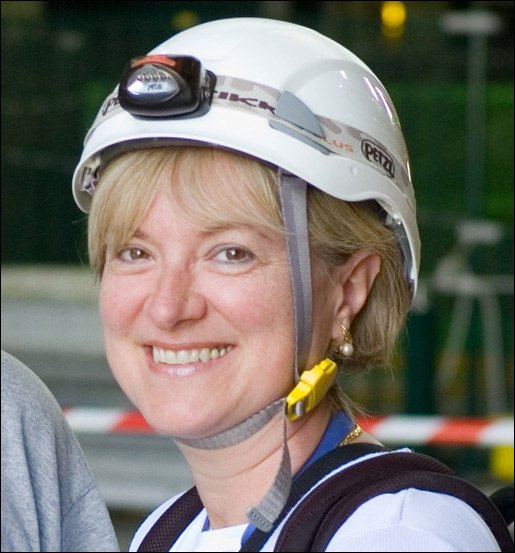
ATLAS e-News
23 February 2011
4 February 2008
Alessandra Ciocio
Nationality: Italian
 Alessandra Ciocio
Alessandra Ciocio
When Alessandra Ciocio was given the opportunity to work on the installation of the ATLAS detector, she jumped at the chance. “I was interested in getting this detector to work,” she says.
For more than two years she has been in charge of installing the cables for the SCT sub-detector. “Even though cable installation was not my specialty, it became my specialty!” she says. “Somebody had to do it. We all do whatever it takes to finish the detector. We need to know how to do everything – that’s a physicist’s approach.”
Alessandra began working on the ATLAS project in 1994, participating in the development of early prototypes of the SCT modules and electronics at her home institute, the Lawrence Berkeley National Laboratory. “When you build a detector of this size and such complexity, it’s built module by module, section by section,” she says. “And first, you have to spend several years developing prototype modules and carry on endless studies to increase their performance. That means a lot of years doing lab tests.”
But in the summer 2005, only a few months after making the last shipment of the several hundred SCT barrel modules produced in Berkeley, Alessandra decided to move to Geneva to follow the installation process more closely. It was then that she became involved with cable installation. “We had to install almost 9000 cables,” she says. “That means I needed to know all the mapping, where the cables go, which position they occupy close to the detector, in the many intermediate racks in the ATLAS cavern and which channel of the power supply they connect to in the underground control rooms.”
There is more to cable installation than planning, Alessandra says. “These cables are long – in the order of 70 to 100 metres. Just to pull one of them needs nine strong men.” Then there is the testing process, she says. Each cable was tested both before and after installation, after each plug-in, to make sure that being moved hadn’t caused any damage and that there were no defects from the production.
“We had armies of students, technicians and even professors – whoever was willing to help – to test those cables at every step,” she remembers. “During the installation process, I actually needed all the people from the SCT collaboration to come and help. I would have ten people upstairs testing and preparing cables for the installation, nine people downstairs pulling the cables (thanks to the Technical Coordination teams), then the people installing the power supplies, the people installing the readout boards, and people connecting and testing the cables.”
But finally, in September 2007, the long process was completed with the final connection of the detector to those cables that were already in place. Alessandra is keen to move on from cable installation. “I don’t want to be known for cable installation alone!” she says. “We’re now in the commissioning phase, which will go on for several months. I’m Deputy Commissioning Coordinator for the SCT, so now I take care of all the operations to study the SCT detector and make it work.
“The detector is now installed, and it’s all connected,” she says. “The barrel has been signed-off, so we can study its performance and tune it to the smallest detail, and the End-Cap is all connected and being signed-off. By March, I’d say the SCT detector could be ready to see it’s first cosmic ray in the pit.”
